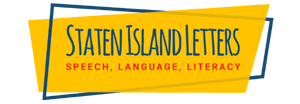Diagnosing ASD requires interdisciplinary collaboration and the active involvement of the family. A speech-language pathologist (SLP) plays a key role during the assessment, together with a pediatrician, pediatric neurologist, and a developmental pediatrician. During the evaluation, the following must be identified before a diagnosis can be made:
During the evaluation process, the role of an SLP centres on observing and taking note of the child’s spoken and written language skills (when appropriate) and social communication. A speech-language pathologist then conducts a comprehensive speech-language assessment that includes speech and language skills testing, feeding and swallowing, and augmentative and alternative communication (AAC).
As a neurodevelopmental disorder, ASD is a lifelong condition with no known cure. But like many other disorders, an early and accurate diagnosis can make a significant difference in addressing the condition. Recognizing the disorder early on can help families access appropriate resources, such as special education services and learning programs. Early diagnosis can also help families and caregivers establish a system that allows them to understand and manage the child’s difficulties.
Besides special educators, psychologists, and pediatricians, an SLP plays a crucial role in the treatment and management of ASD. Primarily, SLPs can work with the child to improve social and communication skills to ensure their success at home, school, and later life.
Following the 2001 World Health Organization guidelines, autism treatment is designed to:
For ASD, the primary goal of treatment is improving social communication and language skills as well as managing or modifying existing behaviors. These are all key in making sure the child is not hindered from developing and maintaining relationships, succeeding in social settings, and being actively involved in daily life. Learn more about social communication disorder.
More specifically, an SLP may work with the child to improve the following skills:
One of the hallmarks of Autism Spectrum Disorders is difficulty with language and communication, negatively affecting the child’s social functioning. Our intervention primarily targets social speech in naturalistic settings: entertaining games, activities, and play. For toddlers and preschoolers, play is the most important teaching tool when targeting social speech. Improving the right play skills increases social attention, also known as joint attention, the building block for social reciprocity. For school age children, goals may include explicitly teaching social rules, e.g. conversation starters and killers, reading non-verbal communication, e.g. what does it mean when someone frowns and crosses their arms, teaching what others may be thinking, providing skills to deal with classmates etc., and ideally practicing these social skills in small groups. We also work with siblings and transfer goals from therapy into your home.

